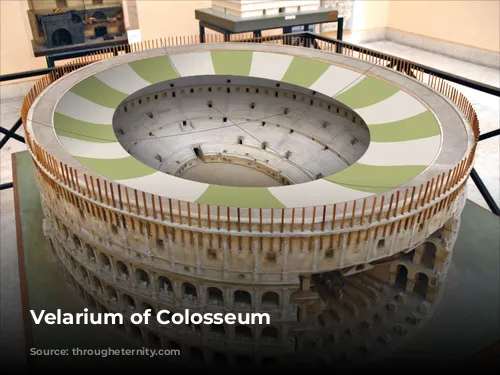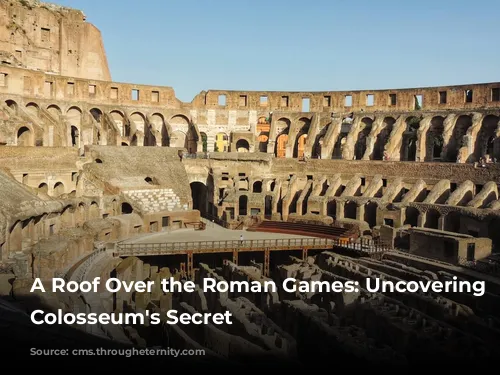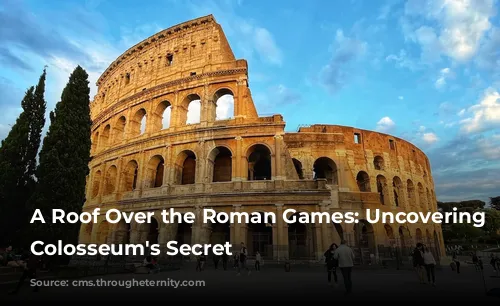Have you ever felt the searing heat of the Roman sun while exploring the Colosseum’s ancient ruins? It’s easy to imagine how unbearable the conditions must have been for the 50,000 spectators packed into the arena during the brutal gladiatorial contests. Imagine the intense glare of the sun reflecting off the sand and stone, with no shade to offer relief.
A Shade of Luxury
But fear not, those luxury-loving ancient Romans weren’t about to endure such discomfort. Contrary to popular belief, the Colosseum wasn’t a sun-baked wasteland. It was actually equipped with a spectacular retractable awning, a technological marvel that protected spectators from the relentless Italian sun. While you might recognize the awning from Ridley Scott’s movie “Gladiator”, it wasn’t just a Hollywood invention.
Awning: A Common Spectacle
By the time the Colosseum was completed in 80 AD, movable fabric roofs were a common sight in theatres and amphitheaters across the Roman Empire. Even Pompeii boasted about its awnings in marketing graffiti, promoting the upcoming games with the promise of “vela erunt” – there will be awnings!
Ancient literary sources also shed light on the importance of awnings. Caligula, known for his cruel and unusual punishments, would often retract the awning of the Colosseum’s predecessor during the hottest part of the day, forcing spectators to endure the scorching sun or face death. His successor, Nero, took things a step further, adorning the Theatre of Pompey with a luxurious purple awning featuring a massive image of himself driving the chariot of the Sun.
A Colossal Engineering Feat
But covering the massive Colosseum presented a different challenge altogether. It required a remarkable engineering feat to create an awning that could protect the nearly 200-foot-tall structure.
The Velarium: A Masterpiece of Engineering
The velarium, as it was known, was a masterpiece of engineering. It consisted of tapered fabric pieces supported by a complex web of ropes, held aloft by 240 wooden masts that extended from the Colosseum’s top tier. If you ever get the chance to explore the upper levels of the Colosseum, you can still see the remains of these masts and the sockets that anchored them.
The velarium didn’t cover the entire Colosseum but instead sloped downwards, leaving a large central opening, creating a striking contrast between the sun-drenched arena and the shadowed seating area.
Skilled Sailors: The Awning Masters
The velarium was made of the same linen or canvas used to create ship sails, hence the name derived from the Latin word for “sail”. It’s no coincidence that skilled sailors were entrusted with operating the awning. A special detachment of sailors from Misenum near Naples was stationed close to the Colosseum, known as the Castra Misenatium, responsible for manipulating the velarium’s intricate system of ropes.
A Prestigious Assignment: From Sails to Games
Working with the velarium was a prestigious assignment for slaves conscripted into the Roman navy. But it wasn’t all sunshine and shade. The Castra Misenatium also housed sailors who would participate in the naumachiae, or mock sea battles, a dramatic spectacle that formed part of the Colosseum’s inaugural games in 80 AD.
Beyond Functionality: A Dramatic Spectacle
The velarium was more than just a practical solution to the harsh Roman sun. It was a dramatic element, transforming the arena into a cathedral of light against a backdrop of shadow, adding an extra layer of intensity to the gladiatorial contests.
By showcasing the velarium’s fascinating history on your next Colosseum tour, you can discover how even the most mundane aspects of ancient life were interwoven with grandeur and innovation.


